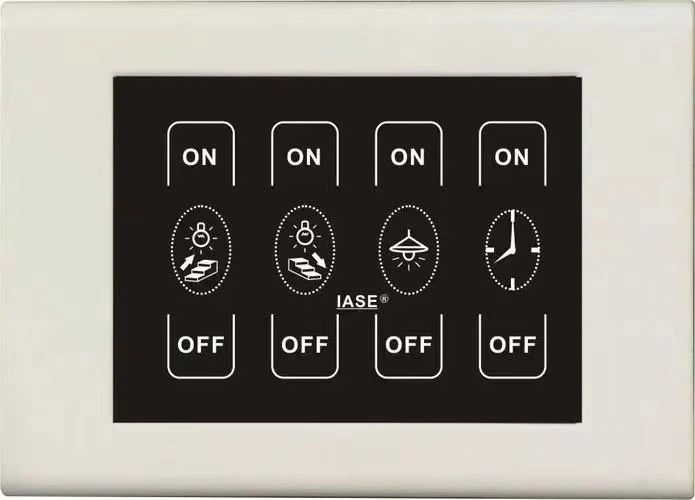Touch screen used in temperature control system
Capacitive touch screens have a wide range of applications in temperature control systems. Temperature control systems are typically used to monitor and control room temperature to provide a comfortable environment. Below are a few application aspects of capacitive touchscreens in temperature control systems:
Operator Interface: Capacitive touch screen can be used as the operator interface of the temperature control system, allowing the user to operate and set up through the icons, buttons, etc. on the touch screen. Users can use their fingers or stylus to interact directly with the temperature control system, which is convenient and practical.
Temperature Adjustment: Through the capacitive touch screen, users can adjust the set temperature of the temperature control system. The touch screen interface displays the current and set temperatures and provides operating elements such as adjustment buttons or sliders, enabling the user to precisely control the room temperature.
Timing Control: The capacitive touch screen can provide a timing function that allows the user to set the temperature control system to turn on or off automatically at a specific time and adjust the temperature setpoint through the touch screen interface. This allows the user to pre-set the temperature change according to their needs and achieve intelligent temperature control management.
Alarm notification: The capacitive touch screen can also be used to display system status and send alarm notifications. When the temperature exceeds the set range or other abnormalities occur in the system, the touch screen can display the alarm information in time to remind the user to carry out the corresponding processing.
The application of touch screen in the temperature control system has the following benefits:
Easy to operate: touch screen operation is simple and direct, the user can easily adjust the room temperature and other parameters by touching the buttons on the screen, icons and sliders and other elements. Traditional push-button controls require the user to find the setting buttons one by one, which is relatively cumbersome and unintuitive to use.
Clear display of information: The touch screen interface can display various temperature parameters and real-time monitoring status in the form of charts, figures and other forms. Especially in large shopping malls or public places in the temperature control system, the touch screen information display function is more able to quickly and clearly show the temperature of each area and the state of information, optimising the monitoring and management efficiency.
Energy saving and environmental protection: As the touch screen adopts digital control mode, it can quickly and accurately respond to the user's needs, so that the temperature, humidity and other control parameters can be effectively fine-tuned. This is conducive to saving energy, reducing indoor temperature waste, reducing the range of temperature fluctuations, and achieving the purpose of energy saving and environmental protection.
Safe and reliable: touch screen can avoid mechanical switches, toggle buttons and other ways to avoid operating errors and electrical aging damage, so that the control is more fine and reliable, but also reduces the failure rate of equipment and security risks.
In general, the application of touch screen in the temperature control system has the advantages of easy operation, clear information display, energy saving and environmental protection and safety and reliability. These advantages help to improve the control efficiency of refrigeration, heating and other aspects, enhance the user experience, and is an effective and practical technical solution.





